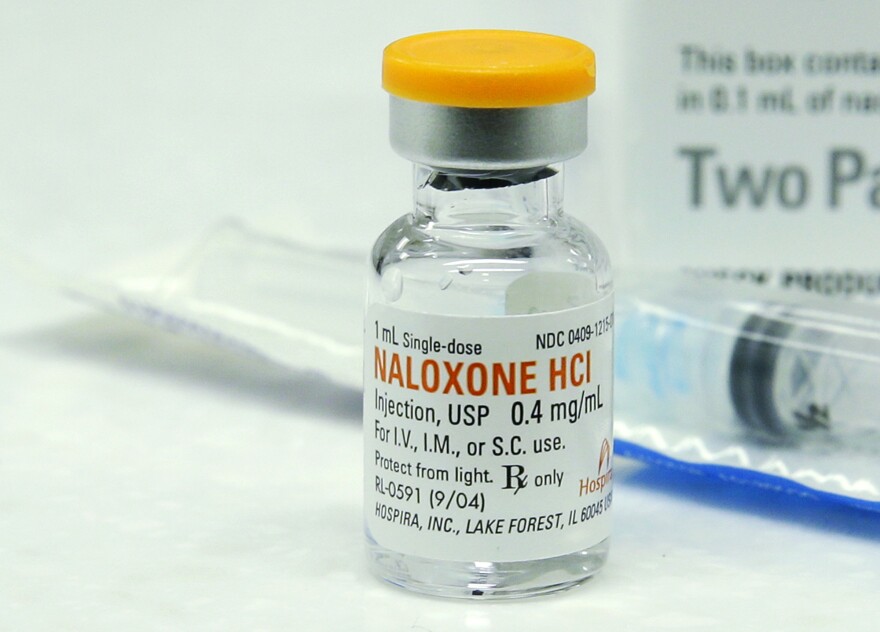Gov. Paul LePage on Thursday approved new rules that would increase access to naloxone, the drug that can reverse opioid overdoses.
LePage’s support comes after the Maine Board of Pharmacy raised the age limit to buy naloxone from 18 to 21. Democratic leaders have criticized both the governor and the board for not acting more quickly and vow to lower the age limit back to 18.
The Maine Board of Pharmacy first approved rules that would allow people to buy naloxone without a doctor’s prescription six months ago. But LePage refused to approve them. Pharmacy board chair Joe Bruno told members in a meeting Thursday morning that he reached an agreement with the governor to secure his support.
“That is what you see in front of you now. The only change is it raises the age from 18 to 21,” he said.
The board voted unanimously to approve the proposed rules. Within hours, a spokeswoman for LePage said he had signed on as well. While Democratic leaders including party chairman Phil Bartlett described it as a positive step forward, he said raising the age limit to 21 is unnecessary.
“It’s a red herring. What’s the issue here? This isn’t something that you’re going to use for personal consumption. So the idea that being 21 is any substantive difference, it’s ridiculous,” he said.
House Democratic Leader Sara Gideon said that the new rules run counter to the intent of the law, which is to increase access to naloxone to save every life possible. In a written statement, she says, “what the Board of Pharmacy did today has no basis in medical research or expert opinion, it was merely a petulant action at the behest of Governor LePage.”
Gideon said she’ll work to lower the age limit back down to 18.
The proposed rules will undergo a 30-day public comment period, then go back to the pharmacy board and the attorney general’s office for further review, and that could take months. Bruno said he hopes it won’t take that long.
In the first six months of last year, 185 people in Maine died from drug overdoses. That’s on track with numbers from the previous year, which averaged more than one death per day.
This story was originally published Feb. 1, 2018 at 9:01 a.m. ET.




